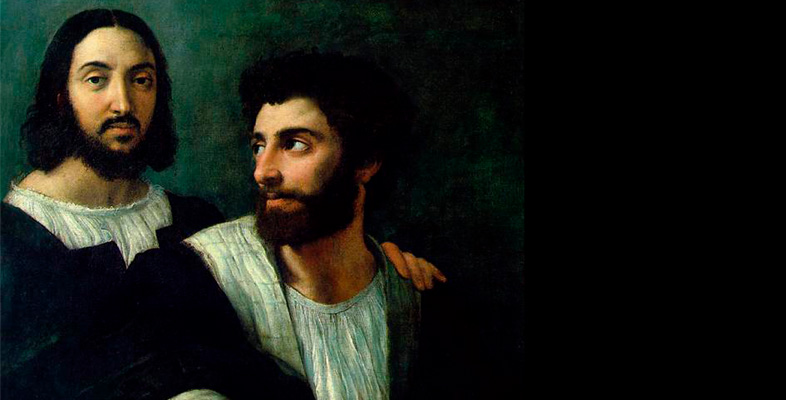1.5.2 Ambassadors
Holbein’s Ambassadors appears on the front cover of Greenblatt’s book and Renaissance Self-Fashioning evokes it often as a sort of illustration of Greenblatt’s theory. Greenblatt compares the portrait with Thomas More’s Utopia, describing both as examples of ‘the representational power of art, its central role in man’s apprehension and control of reality’ (p. 21).
In his book, Greenblatt uses Holbein’s painting to describe the complexities of identity and subjectivity in the Renaissance, a new era for ‘the self’. Renaissance Self-Fashioning considers how this modern self is shaped through possibilities of what he elsewhere describes as ‘constraint’ and ‘mobility’. On the one hand, the individual butts up against those limits and structures imposed by society which give shape to the subject, while on the other he or she still possesses the ability to choose and construct an identity in an artful way. Subjectivity emerges out of the opposition between these two forces. With his interest in the social boundaries and ideologies that create the self, Greenblatt reveals his dependence upon Althusser and upon Foucault’s technologies of power.
Greenblatt focuses not only on the ideological construction of the human will. He also underscores the notion that the Renaissance offered new opportunities for the individual, such as the ability to change one’s religious beliefs or one’s social standing. Art (especially, one would imagine, portraiture) gives us insight into the continual back-and-forth between the codes of society and human desire to push against them, self-consciously and sometimes subversively. To access these operations Greenblatt is interested in those aspects of culture that don’t fall neatly into place. Texts and images are marked not by coherence and unity but, as he writes elsewhere, by ‘fields of force, places of dissension and shifting interests, occasions for the jostling of orthodox and subversive impulses’ (Greenblatt, 1982, p. 6).
In searching for particularly significant sites of conflict, Greenblatt maintains a very broad vision of culture, one that brings into its scope art, literature and other elements of what he calls the ‘symbolic economy’. Images, texts and objects circulate within culture just as goods do in a market economy: they are traded, passed from one person to another, and they go up and down in value depending upon how and when they are put to use. Historians of literature must pay close attention to these negotiations wherever they occur; hence Greenblatt’s exploration of a painting to introduce his analysis of Thomas More. Indeed, Greenblatt’s work in the 1980s and 1990s marks a time when the study of images was becoming more common within disciplines outside art history, and when textual–visual relationships were adopted as a concern of cultural studies generally.
